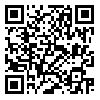Volume 8, Issue 2 (2019)
JCP 2019, 8(2): 143-151 |
Back to browse issues page
Download citation:
BibTeX | RIS | EndNote | Medlars | ProCite | Reference Manager | RefWorks
Send citation to:



BibTeX | RIS | EndNote | Medlars | ProCite | Reference Manager | RefWorks
Send citation to:
Moslemkhani C, hassani F, Nasrollahi Azar E, Khelgatibana F. Potential of spectroscopy for discrimination of PVY infected potato from healthy plants . JCP 2019; 8 (2) :143-151
URL: http://jcp.modares.ac.ir/article-3-23824-en.html
URL: http://jcp.modares.ac.ir/article-3-23824-en.html
1- Seed and Plant Certification and Registration Institute. Agricultural Research, Education and Extension Organization (AREEO), Tehran, Iran. , moslemkhany@yahoo.com
2- Seed and Plant Certification and Registration Institute. Agricultural Research, Education and Extension Organization (AREEO), Tehran, Iran.
2- Seed and Plant Certification and Registration Institute. Agricultural Research, Education and Extension Organization (AREEO), Tehran, Iran.
Abstract: (5654 Views)
Spectroscopy in visible and part of near infrared region was assessed as a non-destructive technique for the detection of plants infected with Potato virus Y (PVY). The aim of our research was to recognize spectral signatures that indicate PVY infected plants. In this assay, we studied spectral reflectance of potato leaves showing different PVY symptoms in cultivars Agria and Milva. Virus titer of leaves that showed different disease symptoms, were estimated using enzyme-linked immune sorbent assay. The means of spectral data obtained from different leaves in each experimental plant were used for spectral analysis. Analyses showed that spectral region in 900-1100nm was markedly sensitive to the PVY infection and could be useful for developing a good spectral signature for detection of the infection. Based on the X loading weights obtained from principal component analysis (PCA), sensitive wavelengths were screened, some wavelengths in this region have most positive or negative loading and based on linear discriminant analysis, they could discriminate infection status with high accuracy. The reflectance variation in this region is related to changes in cell structure and water activity due to viral infection. Results indicate that spectroscopy has a suitable potential to detect virus-infected plants; which could be further developed for more accurate potato field inspection aimed at controlling the spread of viral infection.
Article Type: Original Research |
Subject:
Plant Disease Management
Received: 2018/08/6 | Accepted: 2019/02/8 | Published: 2019/02/21
Received: 2018/08/6 | Accepted: 2019/02/8 | Published: 2019/02/21
Send email to the article author
| Rights and permissions | |
 |
This work is licensed under a Creative Commons Attribution-NonCommercial 4.0 International License. |








